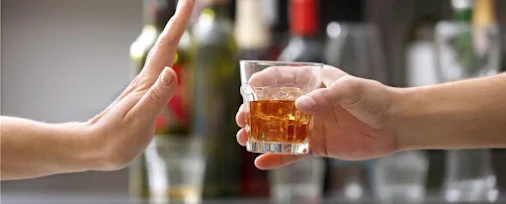Treating Alcohol Addiction – 6 Recovery Options For Alcohol Addiction
The ways to treat alcoholism have definitely undergone a paradigm shift over the ages. The relationship between man and alcohol is very old. Alcohol was first used by Neolithic man way back in 10,000 BC. It is indeed fascinating that it preceded bread as a staple diet and has also been used as medicine.
Treating Alcohol Addiction
Follow these 6 recovery options below on how to stop alcoholism:
1. Detoxification
Detoxification programs run by medical institutions often involve stays for a number of weeks in specialized hospital wards, where drugs may be used to avoid withdrawal symptoms. In severe cases, detoxification may lead to death. To that point, even a simple “de-tox” can involve seizures, if not properly monitored.
ALSO READ: Simple Detoxification Method That Removes Toxins
2. Post Detox Therapy
After detoxification, various forms of group therapy or psychotherapy are recommended to deal with underlying psychological issues leading to alcohol dependence. It is also used to provide the recovering addict with relapse prevention skills.
Aversion therapies may be supported by drugs like Disulfiram, which causes a strong and prompt sensitivity reaction whenever alcohol is consumed. Naltrexone or Acamprosate may improve compliance with abstinence planning by treating the physical aspects of cravings to drink. The standard pharmacopoeia of antidepressants, anxiolytics, and other psychotropic drugs treat underlying mood disorders, neuroses, and psychoses associated with alcoholic symptoms.
In the mid-1930s, the mutual-help group-counseling approach to treatment began and has become very popular. Alcoholics Anonymous is the best-known example of this movement. Various branches are available for family members of the alcoholic or commonly referred to as the co-dependents.
4. Nutritional Therapy
Another treatment program is based on nutritional therapy. Many alcohol dependents have insulin resistance syndrome, a metabolic disorder where the body’s difficulty in processing sugars causes an unsteady supply to the bloodstream. While the disorder can be treated by a hypoglycemic diet, this can affect behavior and emotions, side-effects often seen among alcohol dependents in treatment. The metabolic aspects of such dependence are often overlooked, resulting in poor results. (Even ‘Healthier’ Fast Food Meals Still Have Too Much Fat and......)
5. Societal Impact
Today, alcohol abuse and alcohol dependence are major public health problems in North America, costing the region’s inhabitants, by some estimates, as much as US$170 billion annually. Alcohol abuse and alcohol dependence sometimes cause death, particularly in liver, pancreatic, or kidney disease, internal bleeding, brain deterioration, alcohol poisoning, and suicide. Heavy alcohol consumption by a pregnant mother can also lead to fetal alcohol syndrome, an incurable and damaging condition.
The classical use of medications for alcoholism is to encourage abstinence. Antabuse (also known as disulfiram), for instance, prevents the elimination of chemicals which cause severe discomfort when alcohol is ingested, effectively preventing the alcoholic from drinking in significant amounts while they take the medicine. Heavy drinking while on Antabuse can result in severe illness and death.
READ ALSO: Top 10 Most Dangerous Prescription Drug Combinations
Naltrexone has also been used because it helps curb cravings for alcohol while the person is on it. Both of these, however, have been demonstrated to cause a rebound effect when the user stops taking them. These do allow a person to overcome psychological addictions to alcohol, but they do not treat the neurochemical addiction.
In more recent studies it has been demonstrated that the use of naltrexone, while the alcoholic continues to drink, can result in the extinction of the neurochemical addiction. Referred to as the “Sinclair Method”, this technique is used with good results some US states and in Finland but has failed to penetrate much of the world because of the long-standing bias against any treatment that doesn’t involve detoxification and abstinence.
Additionally, alcohol abuse and dependence are major contributing factors for head injuries, motor vehicle accidents, violence and assaults, neurological, and other medical problems.
Alcohol addiction is a treatable disease. If you are an alcoholic or are a family member of an alcoholic, contact your physician for the most current treatments available.
RELATED: Alcohol And Heart Health













.jpeg)